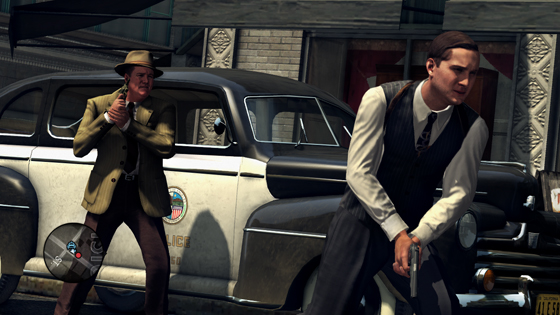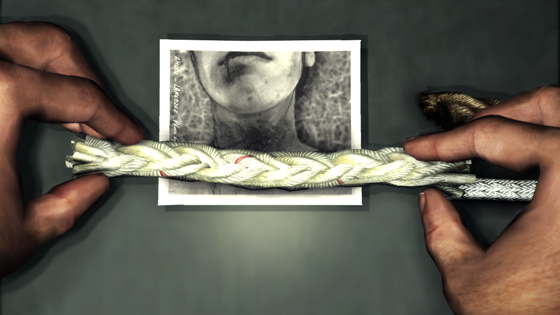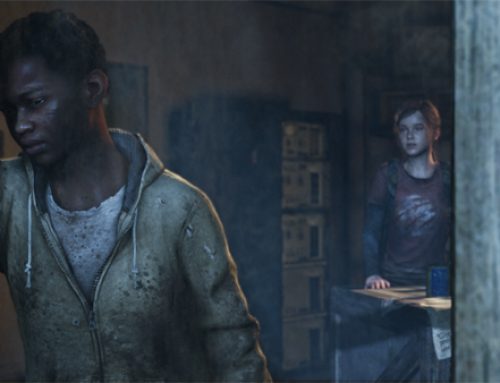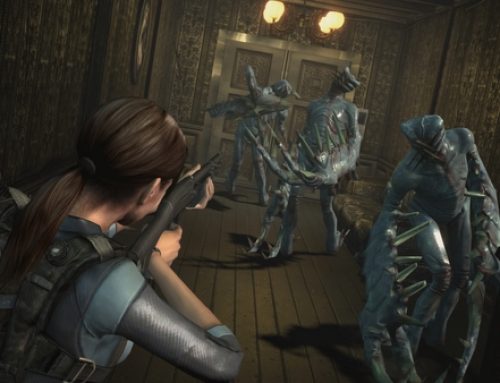Using a fully realized re-creation of post-World War II Los Angeles as a backdrop, “L.A. Noire” spins a fantastic tale of a young war hero’s journey through the ranks of the Los Angeles Police Department. Like last year’s crime thriller “Heavy Rain,” its rich plot is well served by simple gameplay that prioritizes players’ ability to “read” faces, analyze clues and discern motives over an accurate and itchy trigger finger. By simplifying gameplay so that everyone can participate, Team Bondi has created a classic that gamers will be talking about for years.
Published by “Grand Theft Auto” and “Red Dead Redemption” powerhouse Rockstar Games, “L.A. Noire” (rated M, $60 on PlayStation 3 or Xbox 360) tells the story of Cole Phelps. A veteran heavily decorated for his service in the Pacific theater during World War II, Cole settles in Los Angeles and joins the LAPD, quickly rising through the ranks to become an investigator.
At first blush, “L.A. Noire” looks like a “Grand Theft Auto”-style open-world game, but the story is broken up into 21 cases that are played in a fixed order. You can drive around Los Angeles all you want, but with the exception of responding to a few dozen police dispatches, players will take the same path through the game. In that respect, “L.A. Noire” is a lot like last year’s “Mafia II,” which presented players with a huge city and said, “Here’s what you’re gonna do,” as opposed to “Do whatever you want.”
Cases begin with Cole and his partner getting an assignment, and then heading out to a crime scene. Once at the scene, you’ll search for clues. Often, that will require Cole to get up close and personal with dead bodies, which means “L.A. Noire” is not for the youthful or squeamish. Using the clues you’ve found, you’ll assemble a list of persons of interest, then head out to interview them.
Thanks to new software that let Team Bondi capture actors’ facial expressions in addition to their voice work, the interviews are what set “L.A. Noire” apart from everything else on the market. As they begin, Cole will whip out his notebook and have a list of topics he can ask about. As your subject answers each question, you’ll be asked to discern whether the subject is telling the truth. For each question, you have three options: Truth, doubt or lie. The first, obviously, is self-evident. Doubt is used if you’re suspicious about what someone is saying but don’t have any way of catching them in a lie. “Lie” is what you choose if you can present evidence that directly contradicts whatever line your suspect is feeding you.
Oddly, this simple interview system can feel both shallow and quite difficult. Some suspects can be read like an open book, while others will act shifty and look nervously around the room even though they’re telling the truth. It can drive players nuts, but I found it realistic. Lying wouldn’t exist if no one could get away with it.
Many of the cases make use of landmark Los Angeles locations, such as Grauman’s Chinese Theatre and the closed-down set of D.W. Griffith’s failed Hollywood blockbuster “Intolerance.” If you’re willing to do a little Googling between sessions, “L.A. Noire” can help teach you an incredible amount of information about the city’s history. Your drives around the city will be supplemented by a well-curated soundtrack of period-appropriate music and a magnificent musical score that rivals that of any great movie.

The gunplay in "L.A. Noire" can be awkward and clunky, but to get hung up on it is to miss the point.
The gameplay isn’t perfect, but it’s good enough to support “L.A. Noire’s” excellent narrative, which so far surpasses anything else I’ve played this year. There are a few criminally underdeveloped characters and the occasional head-scratching moment, but “L.A. Noire’s” plot doesn’t fall into that common video game trap of ending with a ginormous letdown. Like a good film noir, it builds slowly to a fevered crescendo, pulling together its narrative threads in a deliberate way that encourages players to tackle just one more case before heading off to bed.
Though the narrative is taut and compelling, it’s not without missteps. It’s harder than it should be to empathize with Cole, thanks to the taciturn cop’s general refusal to tell his partners anything about his home or personal life, what happened to him during the war, or really anything interesting. For much of the game, Cole comes off as a cold fish when compared to his complicated, corrupt partners.
This “man of mystery” approach might work in a first-person shooter that’s light on plot, but it fails “L.A. Noire,” particularly in a late-game plot twist I won’t discuss here for fear of spoiling the game. When you, as a player, know so little about the character you’ve been controlling, it’s harder to get into the role. While some of Cole’s wartime exploits are detailed in flashbacks, I was startled when Cole’s wife and children were mentioned offhandedly during a driving sequence on my fourth or fifth case. (It’s worth pointing out that Cole wears a wedding ring, a detail that eluded me but not others.)
At times, the gameplay can’t keep up with Team Bondi’s top-notch story and emotive characters. One minute, you’re scanning a suspect’s well-rendered facial tics and marveling at how far video games have come. The next, you’re high-tailing it after a vehicle that follows a scripted, linear path that’s straight out of 2004. The shootouts, of which there are far too many, are another low point. I often found Cole taking cover behind the wrong object, or facing the wrong way. By the end of the game, I had killed more than 150 bad guys, an incongruous figure in a game that’s supposed to be about solving mysteries.
To fixate on these flaws, though, is to risk missing a larger point: With “L.A. Noire,” Team Bondi has created a smart, gripping detective tale that can be played to completion by even the least skilled gamers. It’s the video game industry’s dirty little secret that the majority of its customers don’t play its games to completion. With “L.A. Noire,” fans of good stories have no excuse not to play till the end credits.





